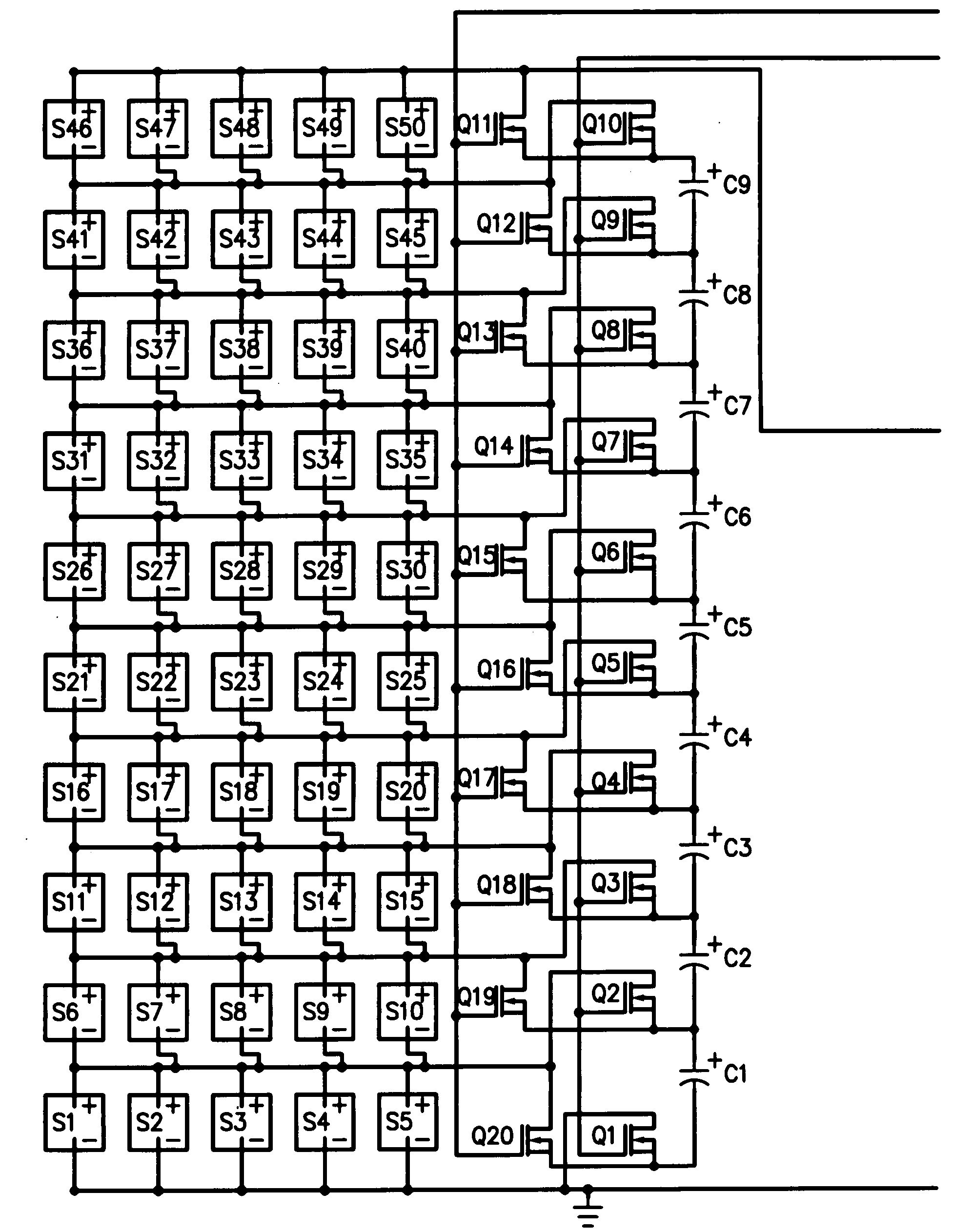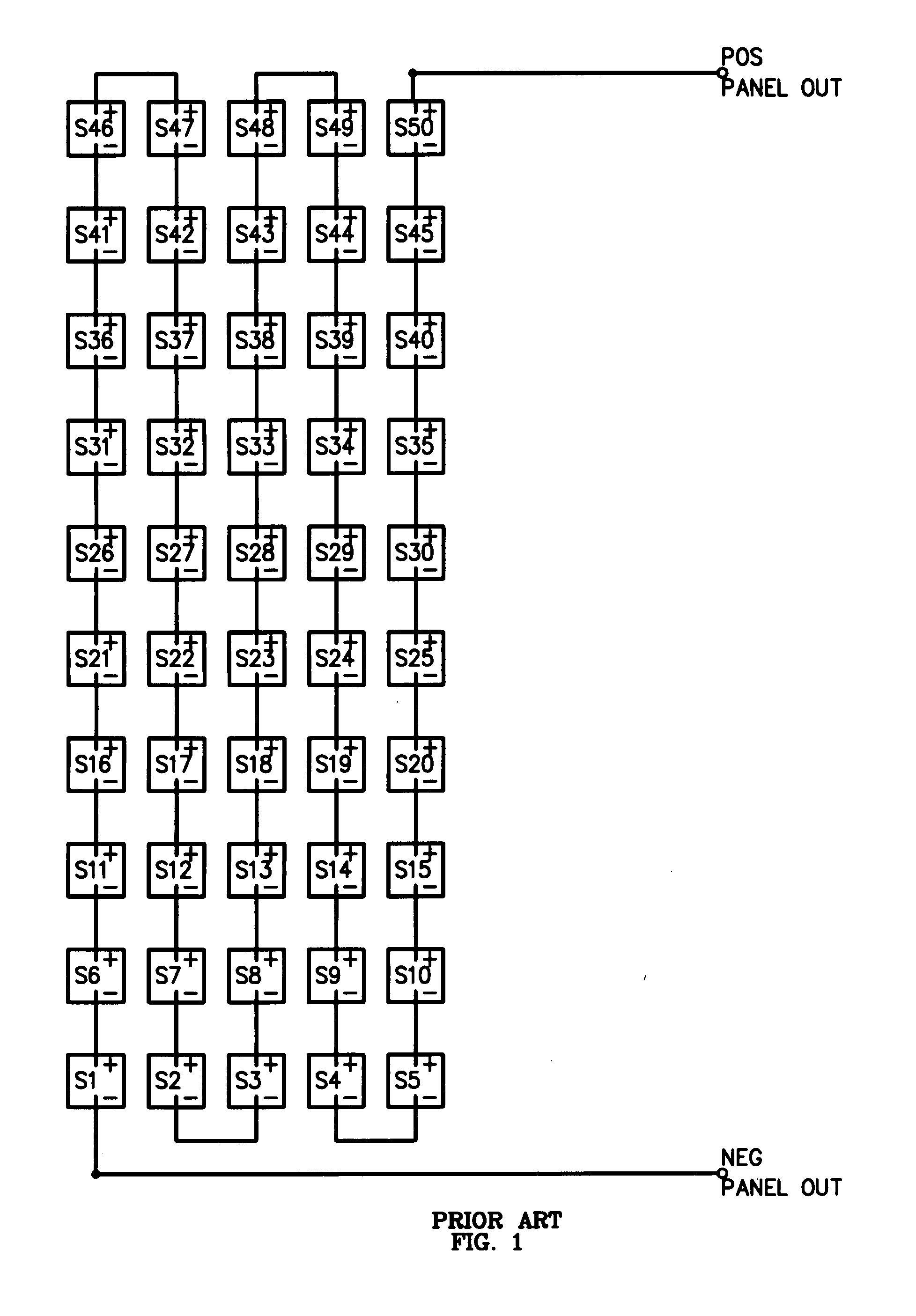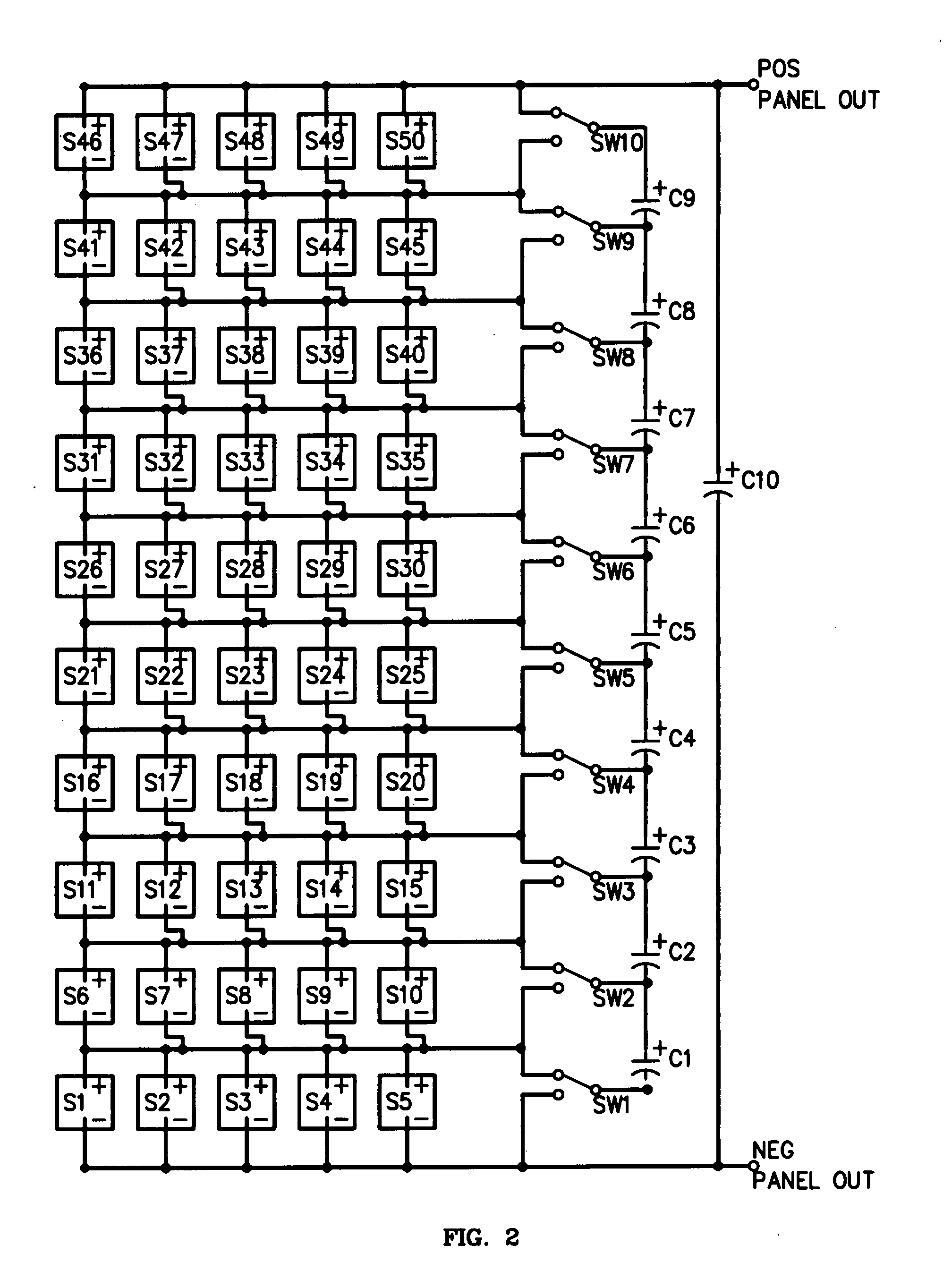Parallel and virtual parallel interconnection of solar cells in solar panels
a solar panel and parallel technology, applied in the field of photovoltaic solar cells and solar panels, can solve the problems of inexhaustible renewable energy, and achieve the effect of minimizing the adverse effects of shadows or physical deposits on some of the solar cells of the solar panel on the power output of the solar panel
- Summary
- Abstract
- Description
- Claims
- Application Information
AI Technical Summary
Benefits of technology
Problems solved by technology
Method used
Image
Examples
Embodiment Construction
[0028]Referring now to FIG. 1, a diagrammatic representation showing a prior art panel of silicon solar cells S1-S50 all electrically connected in series is shown. This panel will have an open circuit (zero current) voltage output of approximately 30 volts and a fully loaded an fully illuminated voltage output of approximately 24 volts and current output of 7.5 amps, resulting in a rated power output of 180 watts.
[0029]If the panel shown in FIG. 1 were to be connected and fully illuminated and delivering 180 watts into a 24V bus, and if only one of the 50 cells was then to suddenly become 50% shaded, then the output current into the 24V bus would suddenly drop from 7.5 amps to 3.75 amps, and the power delivered would be only 90 watts. This 50% shading, or more, is common, as when the illustrated solar panel is situated below power lines casting shadows, or when a leaf or a bird alights upon one or more of the solar cells S51-S100. The considerable fall-off in voltage, and in power, ...
PUM
 Login to View More
Login to View More Abstract
Description
Claims
Application Information
 Login to View More
Login to View More - R&D
- Intellectual Property
- Life Sciences
- Materials
- Tech Scout
- Unparalleled Data Quality
- Higher Quality Content
- 60% Fewer Hallucinations
Browse by: Latest US Patents, China's latest patents, Technical Efficacy Thesaurus, Application Domain, Technology Topic, Popular Technical Reports.
© 2025 PatSnap. All rights reserved.Legal|Privacy policy|Modern Slavery Act Transparency Statement|Sitemap|About US| Contact US: help@patsnap.com



